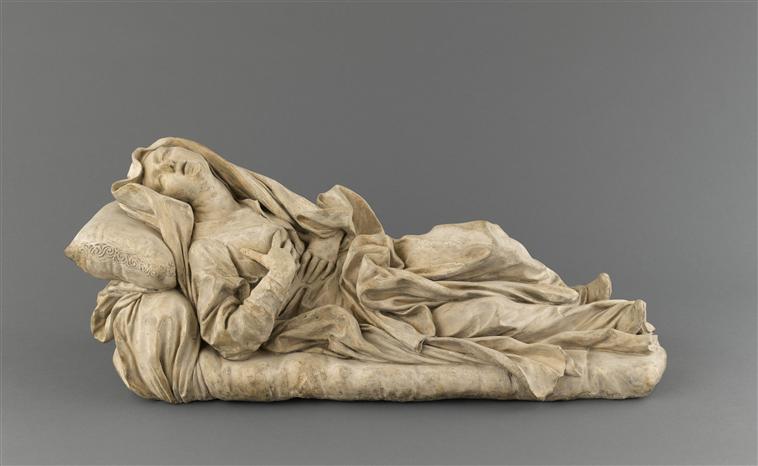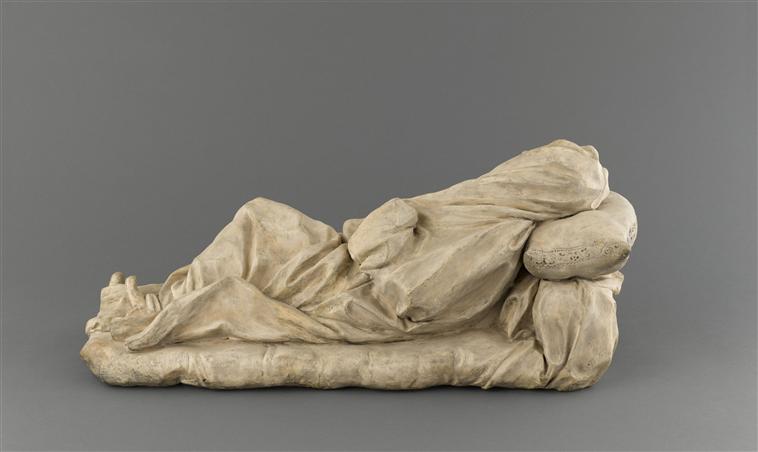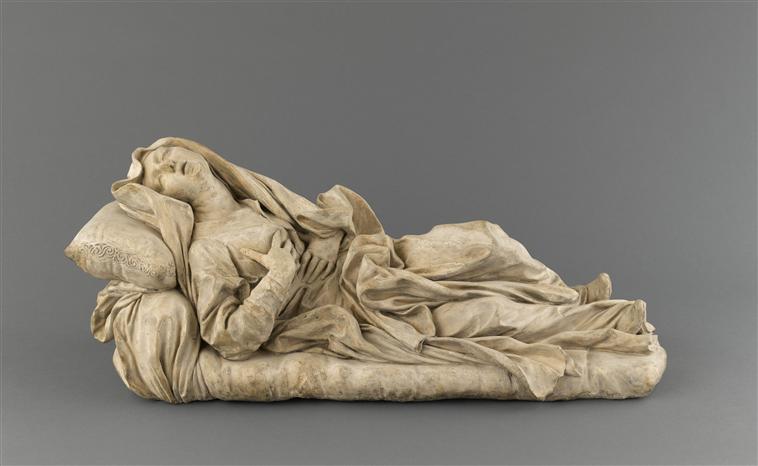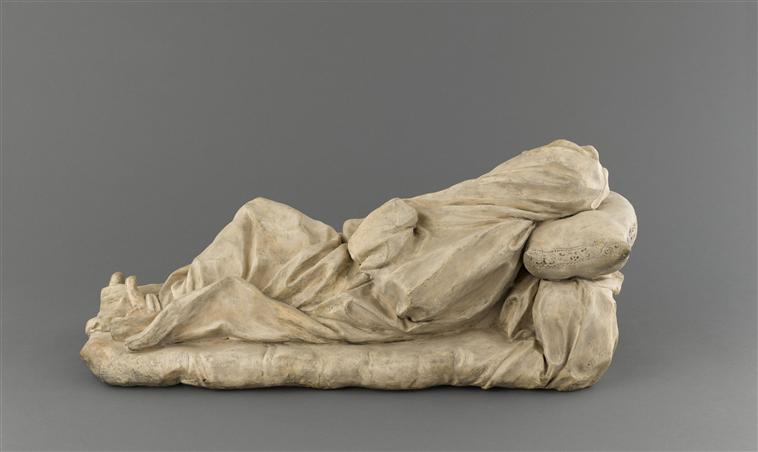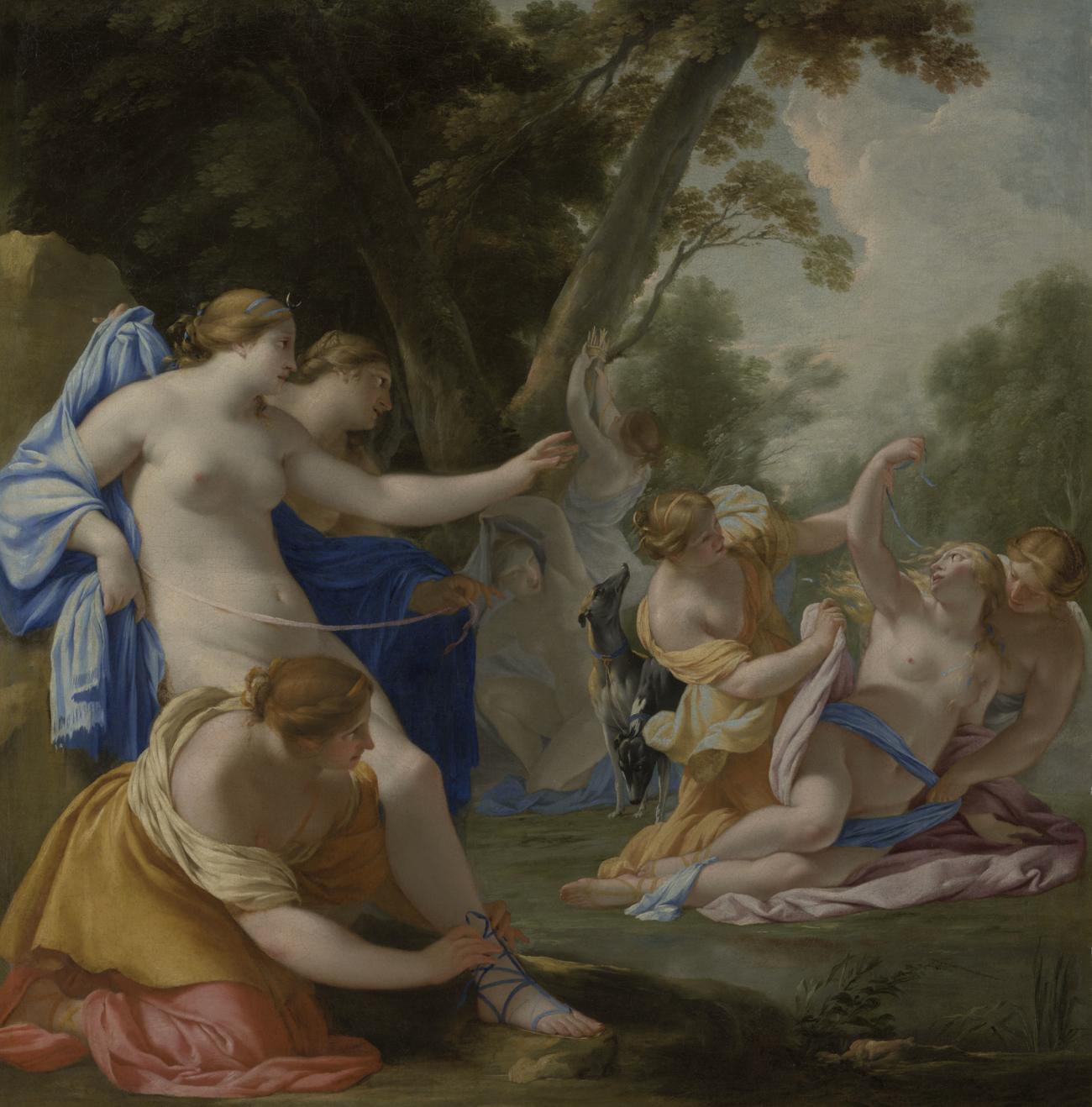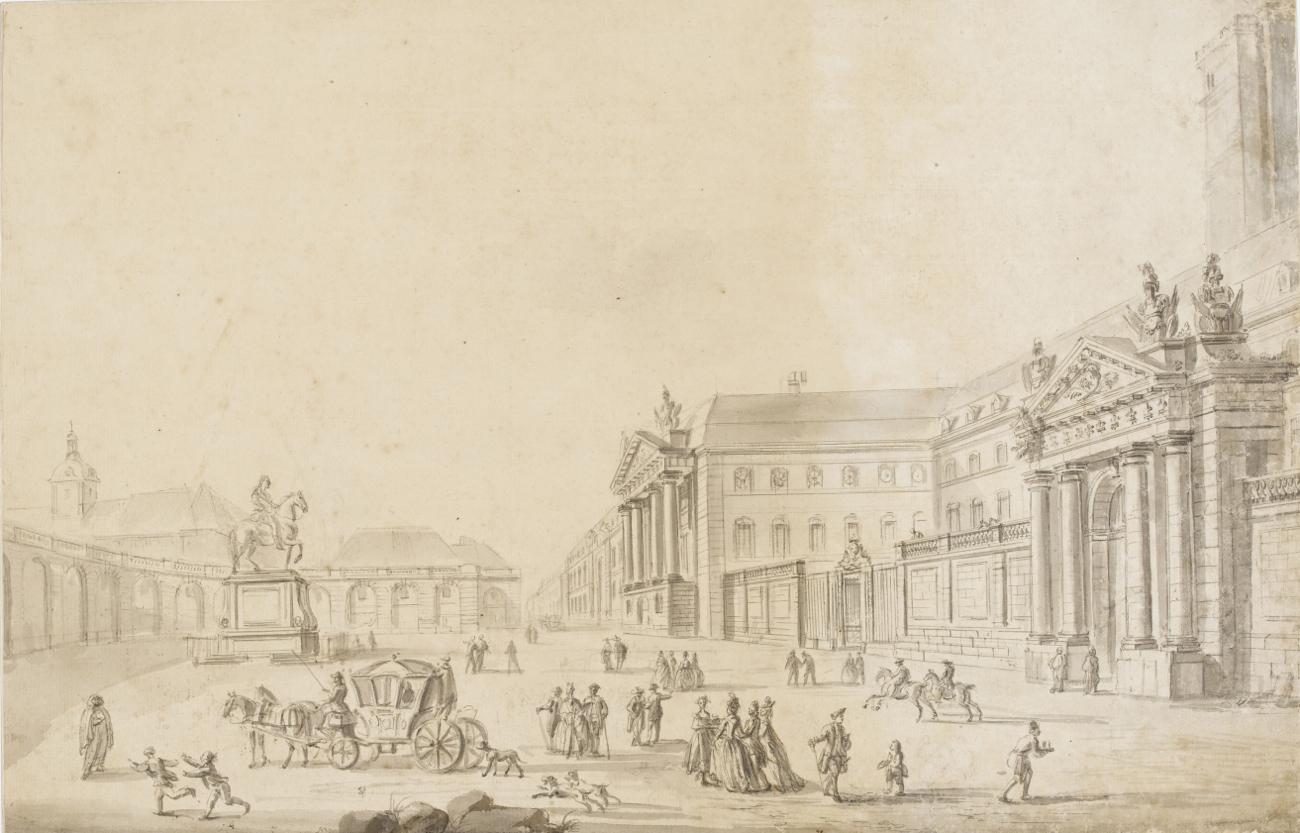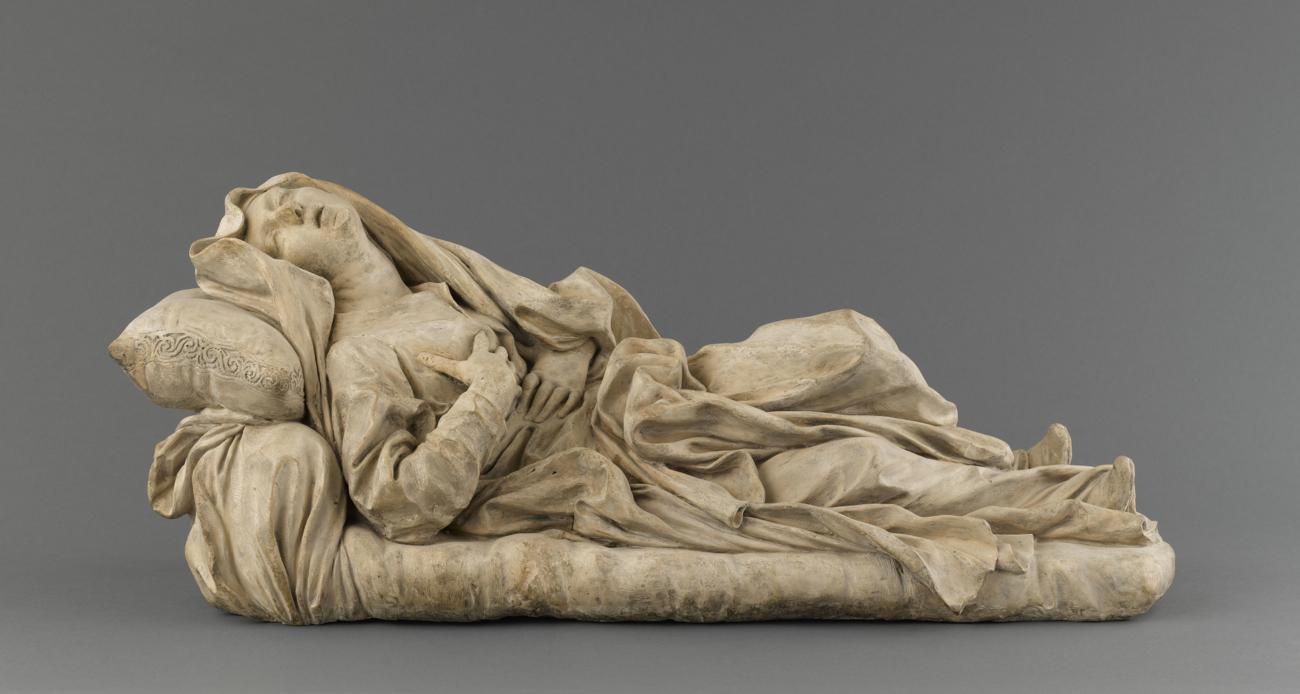
Sculptures
Blessed Ludovica Albertoni
The statue of the woman who devoted her life to helping the poor in the Roman working class area of Trastevere, was executed by Bernini in 1674 for the altar above the saint’s vault in the family chapel of the church of San Francesco a Ripa. The iconography was inspired by the biography written during the process of her beatification, which took place in 1671: laid low by a fever which would eventually kill her in 1533, Ludovica took comfort in the Eucharist, while impatiently waiting for death so that she could be united with Christ. At this late stage in his life, Bernini lapsed into pathos. The position of her hands, the arching of her body and her crumpled habit express her death throes.
His sculpture became so famous that it led to copies and reductions. The terracotta statue in the Musée Magnin is faithful to the marble original, and was certainly executed by a member of the artist’s studio. It is unusual in that it was modelled in the round: the back is fully finished. This reduction therefore seems to be a delightful piece for an art lover or amateur collector. It reveals a change in tastes with the craze for terracotta that took off in the 18th century, and especially the new approach to 17th century religious sculpture. One no longer sees the vibrant mysticism, the austere lesson in how to die well, but rather a sensual, ambiguous image associated with aesthetic enjoyment, in a material and format in keeping with the intimate nature of this pleasure.

